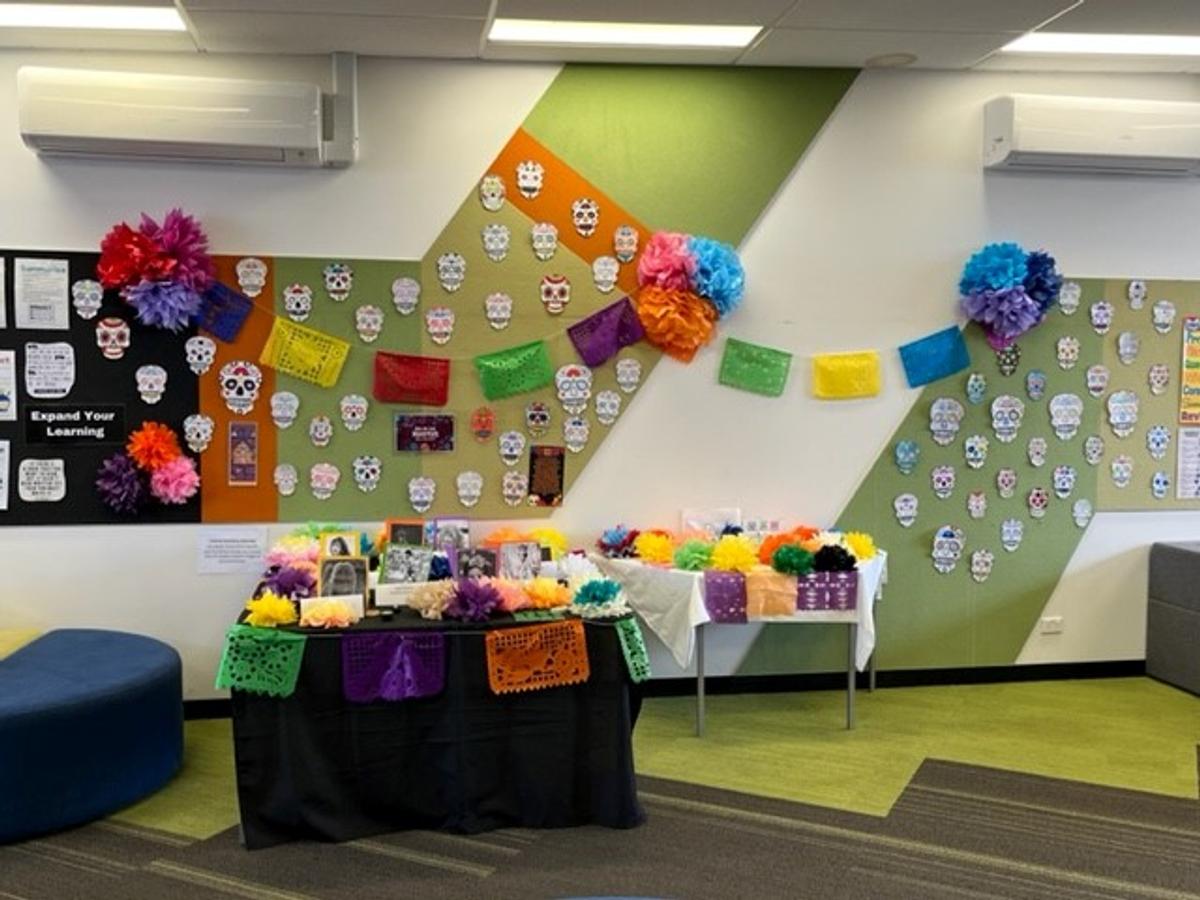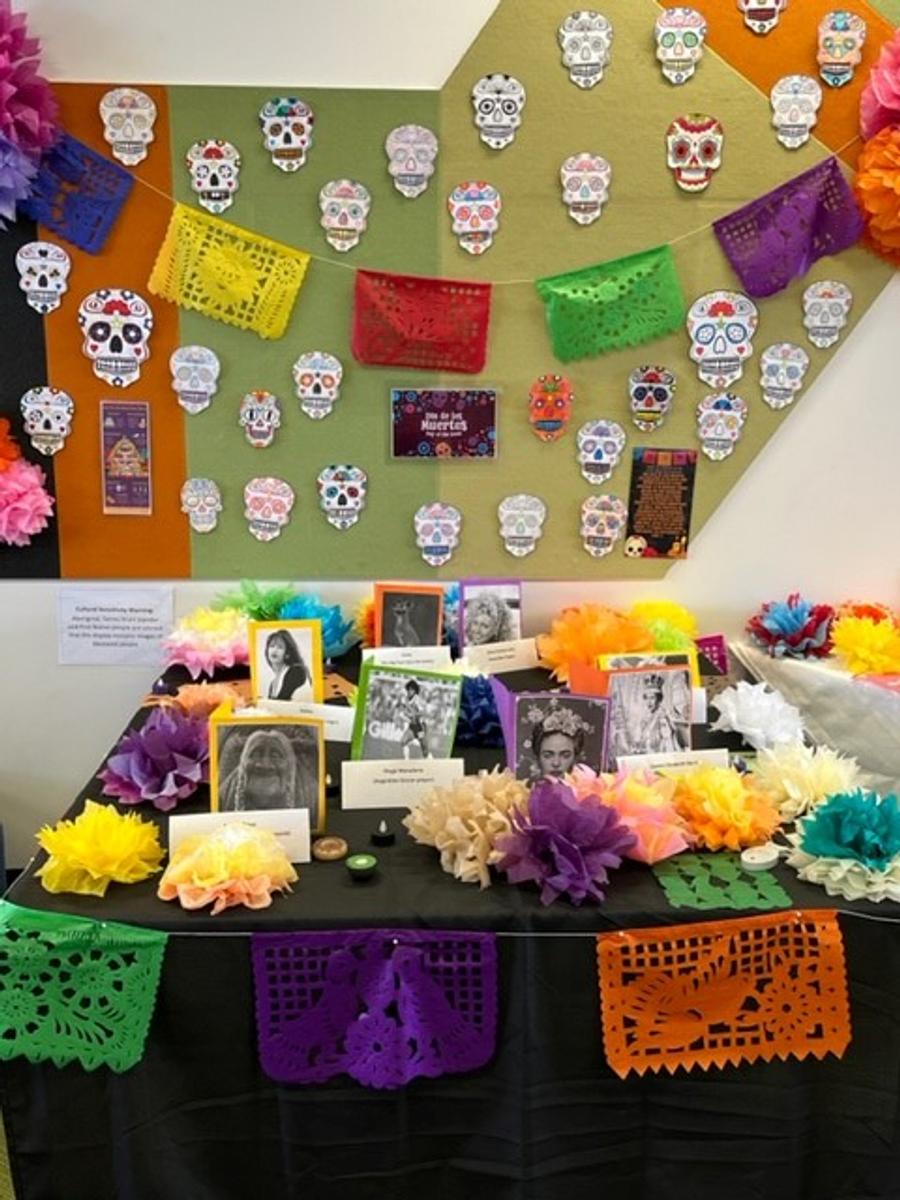Library Report
Day of the Dead - Spanish celebration

Library Report
Day of the Dead - Spanish celebration
Over the past 2 weeks we have had a ‘Day of the Dead’ display in the Library. Some of you may ask - what is this celebration? It is a Spanish tradition that our year 7 and 8 students have been learning about and making decorations for the display. It is a happy, colorful celebration where the death is honored and the deceased are remembered and are enticed back to celebrate the joys of life. Throughout Mexico, altars called las ofrendas (“offerings”) are set up in homes to welcome home the souls of the dead.
The Dia de los Muertos (‘Day of the Dea”) tradition extends throughout Latin America, but is most closely identified with Mexico. The native peoples believed that upon death, the individual’s soul did not die, that they continued to live on in Mictlan, a place of rest. In time, this pre-Hispanic celebration merged with the Catholic celebration of All Soul’s Day and has evolve into the present-day Dia de los Muetos celebration.
Offering, representations and their meanings:




A powerful, and sometimes underestimated way to support your child/ren as they are learning to read is to continue to read to them – every day. When you read to your children you:
Remember that reading aloud is a performance tasks so ham it up, read with expression and make the book come to life. The children will love it. Don’t worry if you make the odd mistake – just show your child/ren how you fix up any mistakes you make. These become very important lessons in how even the best readers problem solve as they read.
Consider asking an older sibling to read to the younger members of the family sometimes. This is good practice for the older child/ren and the younger ones will love it.
Make time to read books that can be enjoyed by multiple ages if you have more than one child. Novels like Roald Dahl’s, The BFG, or EB White’s Charlotte’s Webb, for example can be enjoyed by a range of age, but don’t underestimate picture books. Many have complex stories and these are told by a combination of written words and visual images.
. . . young children’s brains respond to being read picture books in ways that are different to when they just listen to a story without pictures, or watch an animated story or cartoon. (Kamentez, 2018) Click below to read more.
We are almost at the end of the school year and returning of any borrowed books is really important to keep our Library collection available for students to borrow. In early December I’ll be sending out overdue reminders to English teachers to follow up, but also any significant overdue notices to families via compass to see if you can located the overdue book at home. Any questions please contact me via email at library@edgarscreeksc.vic.edu.au
Thanks,
Trish Bennett
College Librarian